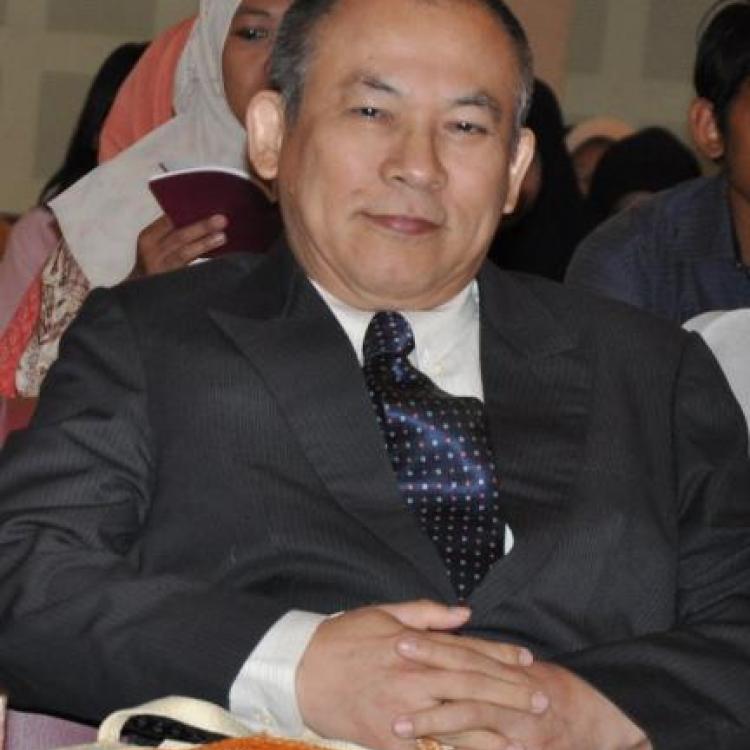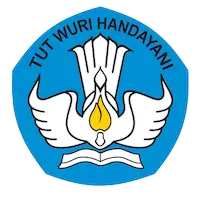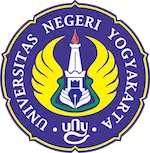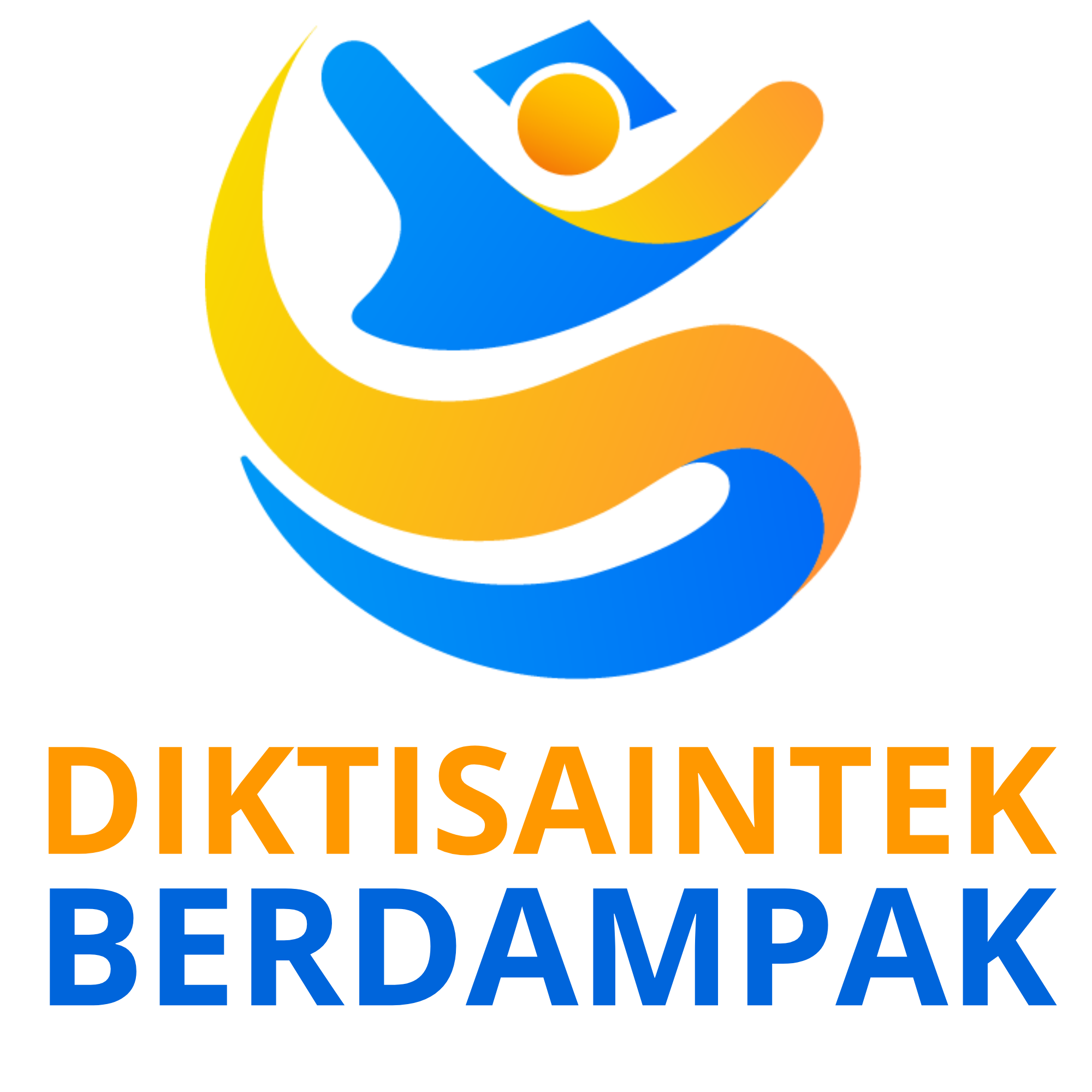1. Introduction
I started my first visit to Indonesia in 2008 by participating in an international seminar about the French language teaching organized by the Indonesian Association of French Teachers. This event took place at the Universitas Pendidikan Indonesia, at Bundung. After that I could not stop coming to Indonesia. I would like to state that I have only three beloved countries: the first one is Thailand, my native country. It would not be surprising if the second one is France because I am a French lecturer and have been teaching this language in Thailand for more than 30 years. French language plays an important role pushing me to come to discover how French is taught in Indonesia.
That’s why I returned back to consecutive seminars organized by the Indonesian Association of French Teachers: Semarang in 2009, Jakarta in 2010, Yogyakarta in 2011, Yogyakarta in 2012 and Medan in 2013. It was a great sorrow for me unable to join the last seminar that was held in Malang in 2014 because I had to defend to my university council my project of a Bachelor of Arts in European Studies. At Naresuan Universiy, which is my former university, I welcomed some colleagues from the French Department of the Universitas Negeri Yogyakarta and Universitas Negeri Semarang.
I was honored to welcome the visit of the rector of Universitas Negeri Yogyakarta, Professor Dr. Rochmat Wahab, at Naresuan University. After that I wrote a letter in French to Mme Alice Almini, head of the French Department at the Faculty of Languages and Arts, in which I expressed my personal opinions about the possibility to promote Bahasa Indonesia as a second Lingua Franca for the ASEAN Community. I want not at all to boast to say that I was the first one to think of it because, according to Ref. [1], a South Korea professor of politics from one of the leading universities in Seoul, proposed to make Bahasa Indonesia as the official language of the Asian countries.
Contrary to the will of this Korean professor, in this framework, I would like to limit my reflections to the possibility to promote Bahasa Indonesia as a second Lingua Franca of the ASEAN community.
2. What is a Lingua Franca?
We cannot conceive a good definition of Lingua Franca without talking about the promotion of English as a Lingua Franca (ELF) in ASEAN Community because it is cited in the article 34 of the ASEAN Charter (Ref. [2]) that “the working language of ASEAN shall be English”. What is exactly the Lingua Franca?
For Merriam-Webster, Lingua Franca is “a language that is used among people who speak various different languages.” (Ref. [3])
For Ref. [4], Lingua Franca is “a language that is adopted as a common language between speakers whose native languages are different.”
From the definition given by Ref. [4], we found a very similar points in Bahasa Indonesia: Bahasa Indonesia is accepted by Indonesia people to be a common language between various ethnic speakers whose native languages are different because there are more than 700 living languages spoken in Indonesia. In this perspective, in terms of political view, the first priority that must be given by every Indonesian government is to unify this diversity in order to successfully establish a national unity. That’s why Bahasa Indonesia is now promoted as a primary tool for “unifying national diversity”.
3. English as the first Lingua Franca of ASEAN
http://www.englishlinguafranca.com/what-is-elf/
Ref. [5] stated that ELF, used in contexts which linked with the expanding circle countries, “are not necessarily geographically located but can be virtual and transient in nature, and can also involve speakers from both the mother tongue and post-colonial contexts. ELF encounters, for example, can take place over the internet, on Facebook, as well as in an office in Beijing”. That is true because I benefit from this “on the fly tool” and that simply means that we are in a real “global village” (Ref.[6]).
For Ref.[7], ELF “has taken on a life of its own, independent to a considerable degree of the norms established by its native users, and that warrants recognition. It is for this reason that ELF would appear to be the preferred term for this phenomenon”.
As I have said in the previous section, my proposition is based on the choice to promote Bahasa as a second lingua franca because English, as a world lingua franca, is an inevitable necessity. Although it is known that it is better to place the highest the bar of your objective, but it is more to propose what is as good as possible. ELF is a must to learn for all population of ASEAN community and Bahasa Indonesia should be a choice practically accepted by ASEAN people.
4. Bahasa Indonesia, a second Lingua Franca: why?
Ref. [8] stated that “Bahasa Indonesia has a unique and privileged position. A sequence of events during the first half of the twentieth century created the conditions which enabled Bahasa Indonesia to achieve this position”.
Ref:[9] reported that Irman Gusman, Chairman of the Regional Representatives Council (DPD) agrees to support Bahasa Indonesia as a Lingua Franca of ASEAN. His important reason is based, like others, on the number of speakers of Malay language which represent 400 million people or 60 percent of the approximately 650 million total population of ASEAN. So, the chances become an official language of ASEAN are very large.
In the same way, Ref.[10], in his blog, argues that there are 5 factors which can enable Bahasa Indonesia as a primary language of ASEAN. The first one is linguistic: Bahasa has a simple structure. In terms of vocabulary, it is a language which integrates several lexical sources: as Portuguese, Sanskrit, Arabic, Dutch, and English. For the rest, social and cultural and economic effects bounce from the biggest number of speakers among the ASEAN population. It means that it is not easy to succeed in promoting Bahasa as a primary language of the ASEAN.
Ref. [11], a former lecturer of Indonesian at the faculty of International Studies, gave back his feedback to my question sent by email. For him, “it would appear logical for Indonesian to gain official status as ASEAN's second official language as it is ASEAN's largest national language by far”. Compared to the ASEAN Community, “the European Union, for instance, has no language that is spoken by such a large percentage of the population”. I do agree with Ref. [12] that the success for the promotion of Bahasa Indonesia will be based on “economic necessity”: Indonesia has to strengthen its economy in order to answer to the need of regional businessmen who would like to gain more profits in doing business with Indonesian people.
Ref.[13], in her blog, reported a research project conducted by Chulalongkorn University focusing on the topic “Human Resources Preparation for the Opening of the ASEAN Market”. It found that Thai will be another important language of communication and a common language in ASEAN on par with English because Thailand is the center of ASEAN. Lately it’s been found that [people in] the neighboring countries such as Lao PDR, Cambodia and Myanmar have become more interested in learning Thai. I would say that this objective is quite difficult to be realized because of the linguistic constraints of Thai. Being geographically the center of ASEAN seems not enough to convince people from other ASEAN countries to spread Thai language.
From my perspective, learning Bahasa Indonesia is much easier than learning Thai, Khmer, Burmese and Vietnamese. When I say that Bahasa can be easily learnt, I compare it to my mother tongue. As a French lecturer who is interested in using new technology for language teaching, I can say that we can benefit from the latest technology for helping new learners to acquire with facility Bahasa Indonesia.
5. How to promote Bahasa Indonesia as a second Lingua Franca of the ASEAN community?
As mentioned in the abstract, my three premises are based on a linguistic one, a cultural one, and - for the sake of the Indonesian people - an economic one.
For the first reason, I could say that my mother tongue is not easy enough to become this second choice because of its different alphabet and tones. Vietnamese and Burmese, as a tonal language can be placed at the same range as Thai. As to Vietnamese, although this language has already adopted the latinization for its alphabet, mastering the 6 basic tones is not easy neither. Khmer, even without tones, is difficult to learn because of its pronunciation and written script. The best choice, in my opinion, is Bahasa Indonesia because of its latinized alphabet and simple structure, like Thai, Burmese, Khmer and Vietnamese. In terms of grammar, these are monosyllabic languages. On the contrary, Bahasa Indonesia, “reinvented” from Malay, has resources to loan words for the constitution of its vocabulary.
For the cultural aspect, I know that it is not easy neither to promote Indonesian culture among the ASEAN people because cultural popularity of a nation depends on several external factors. The most important one comes from the economic growth. In this perspective, I would like to say that there must be a strategic plan for the promotion of Indonesian language that allows the country to “kill two birds with one stone”. I wonder why, from the point of view of Indonesian culture, “kill two birds with one stone” means “Sambil menyelam minum air”. The literal translation is “Drinking water while diving”.
From the economic and educational point of view, Bahasa Indonesia could reinforce the unification of its linguistic diversity by encouraging young generation to have a long stay in another ASEAN member countries. This young generation will learn English Lingua Franca and at the same time promote his national language and culture because of his massive population. From this perspective, Indonesia needs to borrow a big amount of money from foreign banks in order to inject the money for boosting its national and local economy. It’s a worldwide common way to create many jobs for the young generation. Each Indonesian university should plan for inviting a big amount of young generation of ASEAN community to visit Indonesia as young representatives from their countries. These people, after spending months or years to discover language and culture, will return back to their country with a new vision about the Republic of Indonesia.
It is careful to underline that Indonesia has to prepare their people to best welcome young foreigners who would get a financial support from Indonesian government for learning in immersion Bahasa Indonesia and culture. I could say that all rupiah will be mainly spent in Indonesia because from my personal experiences as a French government scholarship holder, I spent most money in housing, buying foods and books, cultural trips organized by CROUS (Government University Service), etc. After that, my French “favoritism” was enabled and I became one the defenders of French language and culture values in Thailand.
It is out of my competences to give more details about international or more specifically regional trade. As a new country who just arrived to unify the country after its independence since 1949 (from Netherland), the future of Indonesia depends on all Indonesian people. As it is generally known that the Indonesian archipelago was inhabited by Homo erectus, popularly known as "Java Man", between 1.5 million years ago, I would say that it is strongly possible that the originated people of one of my neighboring provinces, in Phang-nga, came from Phang-nga in Aceh.
From the tourist point of view, it is a pity that the main revenue of Indonesia, in terms of economy, comes from the internal tourism Ref.[14]: that means that it’s time for Indonesia to turn to the external tourism. There is a paradox that shapes well the comparison between my Thailand and my Indonesia: my Thailand went into a critical political conflict after spending its political security for more than 30 years when Indonesia was running a cross a very serious political problem before finding again peace and “force” to jointly overcome the problems and face challenges in order to “utilize all of the existing potentials and opportunities.
All these are endeavored by the people of Indonesia for attaining their ideal goals, namely (i) to realize public welfare through economic development that is based on its competitive advantage, its natural resources, its human resources and national culture, which is fully supported by the mastery of science and technology, (ii) to realize a society, nation and state that is democratic, civilized, dignified, and upholds the responsibility of freedom and basic human rights, and (iii) to realize development that is just and equitable, that is carried out actively by all, and which results can be benefit by all the Indonesian people”.
I am not sure how Thailand will solve this problem.
6. Discussion
When we know where we are, it will be easier to know where to go. The concept of “Sambil menyelam minum air” is highly interesting for me because it shows that the Indonesian people can enjoy learning English when they spend a long stay in an ASEAN member country. At the same time, they can contribute to promote Bahasa Indonesia as the second lingua franca, not by law, but by practice.
Bahasa Indonesia, in terms of grammar, is easy to learn. Ref. [15], concluded that, for “grammatical processing in language”, from the point of view of psycholinguistics, there are significant factors allowing non native learners to learn a new language. It means that a Thai learner can accelerate his capacity to communicate in Bahasa by means of the grammatical similarity between the two languages. This possibility relies on the vision of the government of the Republic of Indonesia: the promotion of Indonesian language and culture can be viewed as a key factor for increasing the national income of the Indonesian people.
Ref. [16], for SEAMEO Innotech, after conducting an audit about “Teaching competency standards” focusing on eleven countries members of the ASEAN community, concluded that teaching needs several common professional skills and knowledge. This can be certainly applied to the idea to set up a Framework of Competencies for Bahasa Indonesia. At the initial state, it is a duty of the Republic of Indonesia to encourage ASEAN people to learn Bahasa. All Indonesian universities can benefit from this national policy to prepare themselves for best welcoming the youngest generation of the ASEAN. In order to arrive to that point, the concerned parties have to understand how the promotion of their “reinvented” national language can contribute to the economic development of the country.
Ref. [17], in studying “the role of the first language in foreign language learning”, in particular in a situation where learners have little opportunity to meet and use the foreign language outside the classroom, stated that “it is very important that the foreign language use is maximized in the classroom” and that is what it is implemented in the Faculty of International Studies in Phuket Campus of Prince of Songkla University. My Faculty is also interested in opening, at first step, some basic courses of Bahasa Indonesia. As the world education “goes mobile”, we would like to cooperate with one or two Indonesian universities for producing a smartphone application for learning Thai for Indonesian learners and learning Bahasa for Thai learners.
This project would be set as a kind of “kill two birds with one stone”: Thai scholars have to closely work with Indonesian scholars on a fruitful project and at the same time, they establish an effective relationship allowing them to enhance the possibility to develop a common curriculum where Thai students have to take one year in Indonesia and Indonesian students in Thailand.
7. Conclusion
In conclusion, I would like to underline my position that Bahasa Indonesia should not be in competition with English. As English is unanimously voted to be the Lingua Franca of the ASEAN, Indonesian people should enjoy “drinking” while diving in such an English learning situation that the Indonesian young generation could contribute to the promotion for the use of Bahasa during their contact with the young people of ASEAN.
The only way to maximizing the use of Bahasa Indonesia for learners from any ASEAN countries is to increase the contacts between Indonesian scholars and ASEAN scholars, Indonesian students and ASEAN students. In economic terms, the Republic of Indonesia invests the money in the processing of welcome as much as possible scholars and students from ASEAN by turning each Indonesian university to be a qualified host. We cannot do that in one day because of several factors.
After studying an Indonesia master plan for the acceleration and expansion of Indonesia economic development 2011-2025 (Ref.[]), I found no mention about the assessment of the promotion of Bahasa Indonesia in ASEAN. I do agree with Djiti (Ref.[10]) that the development process in a country is mostly based on the economic and political realities. “There is a general lack of interdisciplinarity between economists, educationists and sociolinguists, whose respective research tends to focus on one area, rather than look at the interrelationships and attempt to understand the interplay between language and issues of development”.
ACKNOWLEDGMENT
I am deeply indebted to Professor Siriporn Maneechukate, a lecturer of Bahasa Indonesia at the Faculty of Liberal Arts, Maejo University at Chiangmai and Professor Jacob De Groot, a former lecturer of Bahasa Indonesia at the Faculty of International Studies for introducing me some concerned documents. I am also grateful for Professor Herman Miril, a lecturer of French at the Department of French at Universitas Negeri Yogyakarta for introducing me to this conference.
REFERENCES
[1] ___,“Bahasa Indonesia sebagai Lingua Franca di Asia?”, https://bahasakami.wordpress.com/2009/06/ 30/bahasa-indonesia-sebagai-lingua-franca-di-asia-menurut-anda/, 2015.
[2] ASEAN, "The ASEAN Charter", ASEAN. http://w https://bahasakami.wordpress.com/2009/06/30/bahasa-indonesia-sebagai-lin...., 2008.
[3] Merriam-Webster,"Lingua Franca. Lingua Franca. http://www.merriam-webster.com/dictionary /lingua%20franca., N.d.
[4] Oxford Dictionaries, "Lingua Franca. Lingua Franca,http://www.oxforddictionaries.com/
definition/english/lingua-franca., N.D.
[5] Cogo, Alessia,"English as a Lingua Franca: Concepts, Use, and Implications. ELT Journal: ccr069, 2011.
[6] Seidlhofer, Barbara, "10. Research Perspectives on Teaching English as a Lingua Franca", Annual Review of Applied Linguistics 24: 209–239, 2004.
[7] McLuhan, Marshall, and Bruce R. Powers
1989 The Global Village. Der Weg Der Mediengesellschaft in Das 21.
[8] Lamb, Martin, Hywel Coleman, " Literacy in English and the Transformation of Self and Society in Post-Soeharto Indonesia", International Journal of Bilingual Education and Bilingualism 11(2): 189–205.,2008.
[9] Zubaidah, Neneng, "DPD Dukung Bahasa Indonesia Jadi Bahasa Internasional", January 28. http://nasional.sindonews.com/read/956641/15/dpd-dukung-bahasa-indonesia...., 2015.
[10] Wirawan, Adica, "Peluang Bahasa Indonesia Menjadi Bahasa Utama ASEAN", http://bahasa.kompasiana.com/2012/09/13/peluang-bahasa-indonesia-menjadi..., 2012.
[11] De Groot, Jacob, "Opinion about the Idea to Promote Bahasa Indonesia as a Second Lingua Franca", 2015.
[12] Kaewmala, "The Search for a Common Language: Thai or Malay as “Bahasa ASEAN”?, http://asiancorrespondent.com/74196/thai-or-malay-as-bahasa-asean/, 2012.
[13] Fr.wikipedia, "Indonésie", Fr.wikipedia.org. http://fr.wikipedia.org/wiki/Indon%C3%A9sie., 2015.
[14] Clahsen, Harald, and Claudia Felser, “Grammatical Processing in Language Learners”, Applied Psycholinguistics 27(01): 3–42, 2006.
[15]SEAMEO Innotech, “TEACHING COMPE-TENCY Standards IN SOUTHEAST ASIAN COUNTRIES”, http://www.seameo-innotech.org, 2010.
[16] Nation, Paul, “The Role of the First Language in Foreign Language Learning”, Asian EFL Journal 5(2): 1–8, 2003.
[17] Djité, Paulin G., “The Language Difference: Language and Development in the Greater Mekong Sub-Region”, vol.144. Multilingual Matters, 2011.
[6] Meierkord, Christiane, "Interpreting Successful Lingua Franca Interaction. An Analysis of Non-Native-/non-Native Small Talk Conversations in English", English. http://www.linguistik-online.de/1_00/MEIERKOR.HTM., N.D.
Note:
- This article was presented on The First International Conference on Linguistics and Language Teaching 2015 in Yogyakarta State University, Tuesday and Wednesday (12—13/5/2015)
- Prof. Sombat Khruathong, Ph.D. is lecturer in Faculty of International Studies, Prince of Songkla University, Thailand

 English
English


